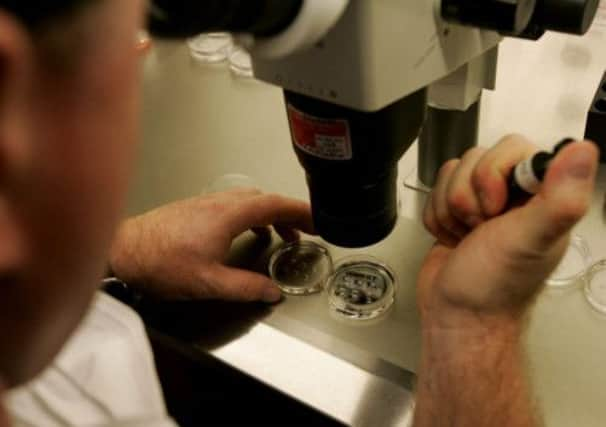‘Wild reservoir’ of animal diseases threatens humans


Dorothy Crawford, emeritus professor of medical microbiology at Edinburgh University, said there was a “wild reservoir” of illnesses in animals with the potential to jump into humans, as HIV first did more than 100 years ago.
The researcher, who has published a history of the virus, called for further investment in the study of animal diseases to help protect the human population.
Advertisement
Hide AdAdvertisement
Hide AdProf Crawford said the pandemic form of HIV in the 1980s probably originated from a specific group of chimpanzees in south-east Cameroon.
The most likely source of spread was through contact with the monkeys’ blood when they were hunted and butchered by tribesmen, she said. It then travelled down the Congo river before spreading worldwide.
“It is most unusual to have a pandemic caused by a sexually transmitted agent of any kind. Usually they are spread through air or water and become recognisable much more quickly,” Prof Crawford said.
“But this is very slow to move from one person to the other but it does not alter the fact that it has managed to spread globally in a relatively short time.
“If we want to prevent this in the future we need to know a lot more about what viruses these primates are carrying and how they might spread to humans in order to prevent them rather than this fire-fighting when it has happened.”
Prof Crawford said there were viruses that existed in animals which had the potential to spread to humans and cause significant problems.
She said that a new Sars virus had been linked to animals, as well as a flu virus in China.
“It is happening a lot and we just need to know an awful lot more about that wild reservoir out there,” she said. “It is a very difficult thing to investigate and it would require a big investment to start looking at wild animals.”
Advertisement
Hide AdAdvertisement
Hide AdProf Crawford said governments needed to provide the funds to conduct studies into animal illnesses.
“They need to see that it’s a problem and put it on their agenda,” she said.
“HIV and, indeed, flu may start hundreds or thousands of miles away but they do affect us.”
Prof Crawford, whose book is called Virus Hunt: The Search for the Origin of HIV/Aids, said, despite falling out of the spotlight in more recent years, HIV remained a problem in Scotland.
According to Health Protection Scotland, it is estimated that there are 4,479 people living in Scotland who have been diagnosed HIV-positive.
In the first three months of this year alone, 91 new cases of the virus were diagnosed in Scotland.
Prof Crawford said: “You have a new generation coming along now and they don’t see the risks quite so clearly as in the 1980s when it was all new.
“It is worrying that the numbers are still so high and there are plenty of new infections each year.”
Advertisement
Hide AdAdvertisement
Hide AdRobert McKay, national director for Terrence Higgins Trust Scotland, agreed that HIV remained a significant concern and more efforts were needed to identify and treat people who may not yet know they have the virus.
“We estimate that the number of people with HIV is much higher than the official figures because around one in four people living with HIV actually don’t know that they have it,” he said.
“So we are probably talking about around 5,600 people in Scotland.”